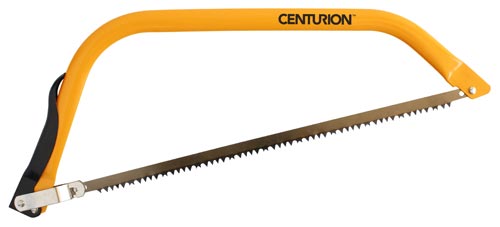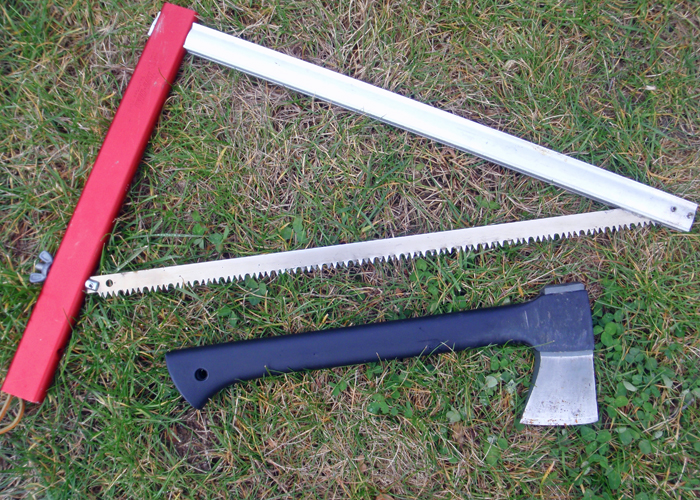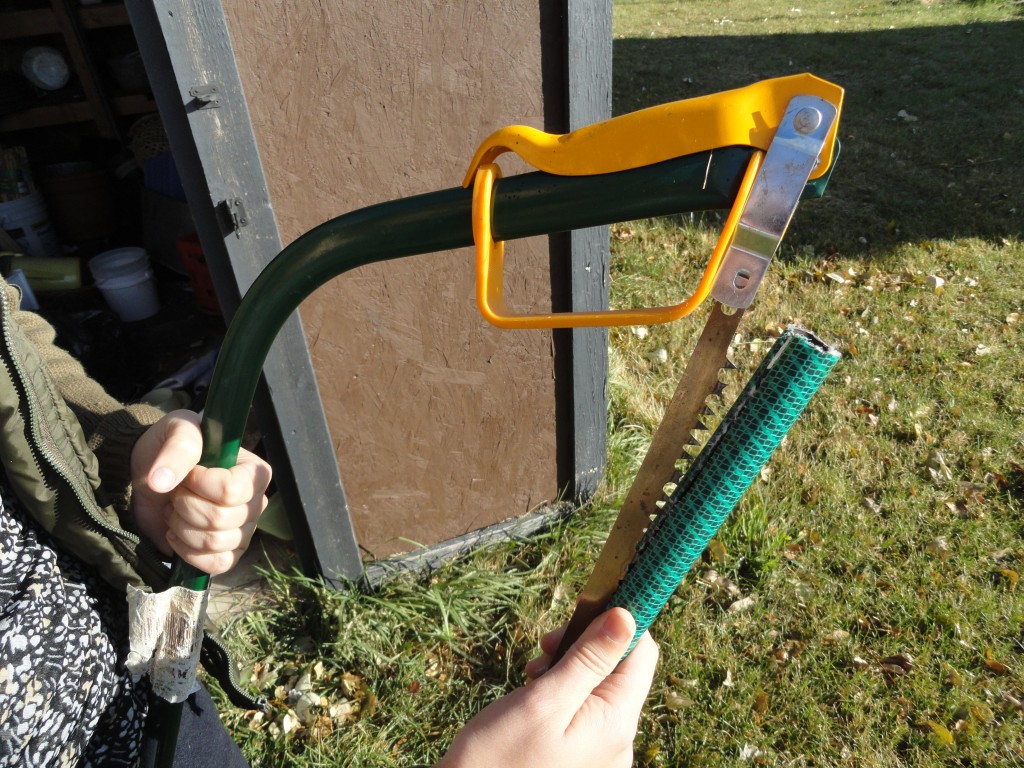How Can We Help?
What are Bow and Folding Saws?
A bow saw is a metal-framed crosscut saw in the shape of a bow with a coarse wide blade. It is a rough tool that can be used for cross-cutting branches or firewood (maybe up to 6 inches in diameter) down to size.
There are multiple kinds of folding saws used for pruning, etc., but for backpacking and campfire use, the Sven-Saw brand type of saw is perhaps the standard. The entire saw is self contained within its case and assembles into a shape similar to that of a bow saw.
| Bow Saw | Folding Saw |
 |
 |
Cleaning and Stowing
Always clean your tools after each use. Remove debris and rinse tools under running water or soak them in water. Remove any remaining soil using a cloth, bristle brush or wire brush. Get rid of any sap that may have collected on cutting tools with soapy water or turpentine. If tools are rusted (whether it be shovels, hoes, saws or pruning shears), use coarse-grade steel wool or lump pumice to remove the rust. Use abrasive materials like sandpaper, emery cloth or a putty knife cautiously as they can leave scratches where rust can redevelop. Once the blade is clean, rust-free and dry, carefully and gently, use a cloth to apply a light amount of oil or WD-40, to prevent rust from settling in on the blade.
Once clean and dry, folding saws can be unassembled and the pieces put back in their case. Bow saw teeth are sharp! One of the best covers is a piece of old garden hose cut down one half. Foam insulation is another option. In a pinch, old clothing or towels can be wrapped around the blade.
Replacing the Blades
Pruning, camping and bow saws are typically not sharpened, because replacement blades are relatively inexpensive.
To replace a blade in a folding saw, unscrew the wing nut holding one end of the blade and unattach from the pin holding the other side in place. Some bow saws have wing nuts and pins like the folding saw, others use the handle to create tension between two pins on each end of the blade. When the handle is holding the blade in place via two pins, the handle will fold out and away from the "bow" part of the saw, which relieves the tension on the blade and allows it to come loose from the pins.
One the blade is free in either type, replace the blade by attaching one end to the pin and then using the wing-nut or pin and handle to attach the other end.
Sources:
- http://hort.uwex.edu/articles/maintaining-lawn-and-garden-tools/
- http://www.svensaw.com/how_it_works.html
- http://www.forestschoolwales.org.uk/wp-content/uploads/FSW-Safe-use-and-storage-of-tools.pdf
- https://en.wikipedia.org/wiki/Bow_saw
- http://bestplants.com/uses-for-old-garden-hoses/

Once the saw blade is cleaned and oiled should it be stored with the blade under tension or should the be relived pulling the handle back? It will probably not be used for another 3 or 4 months.
It really depends on the saw in question. There is no problem storing a regular saw under tension… if it is a packable / folding type saw, then it is always advisable to store it in the “stowed” position.